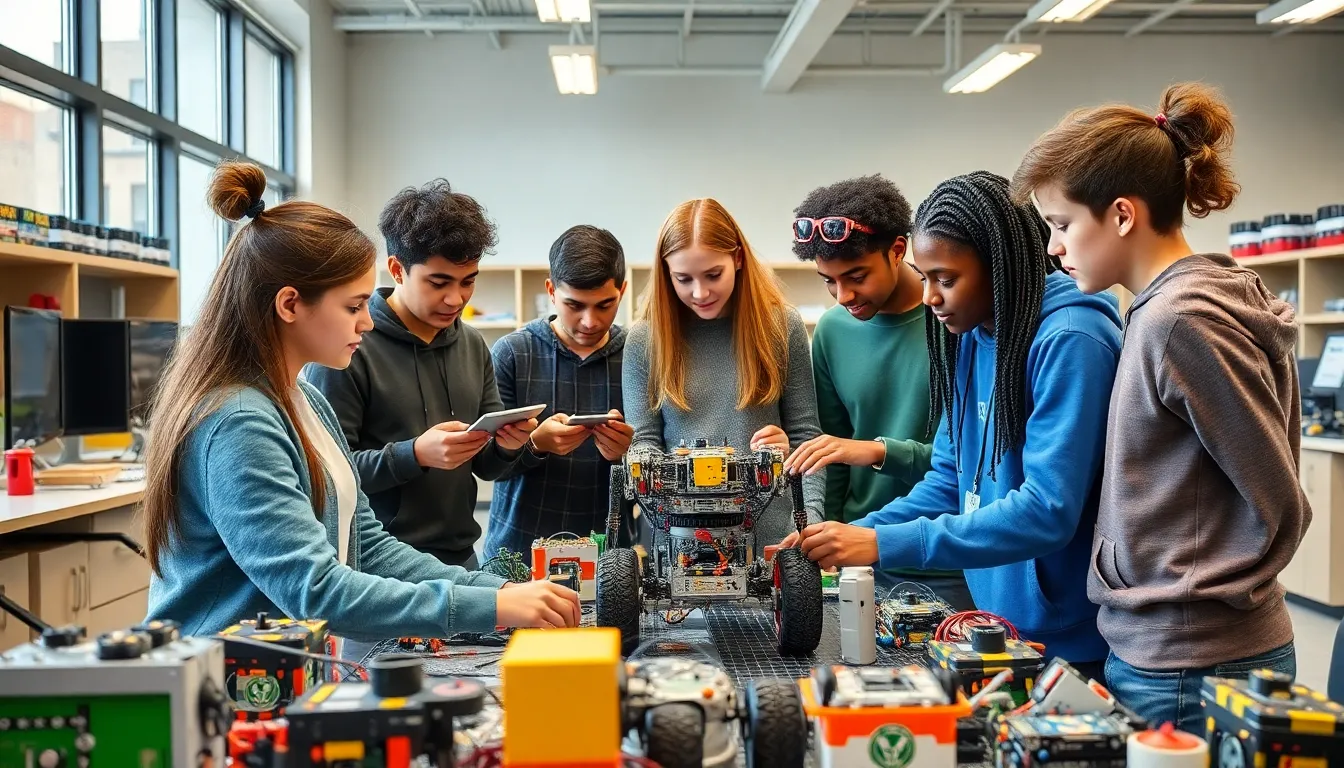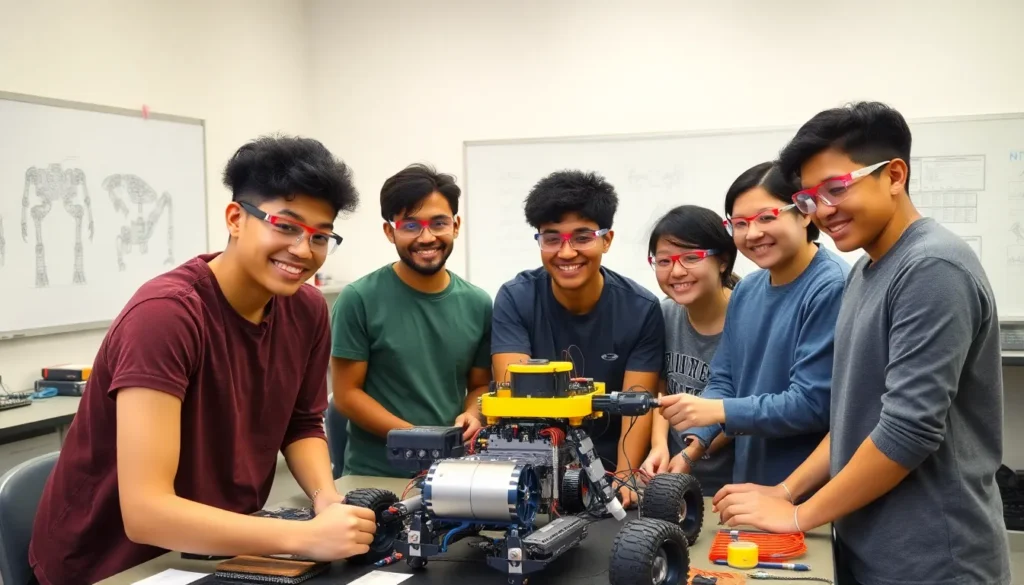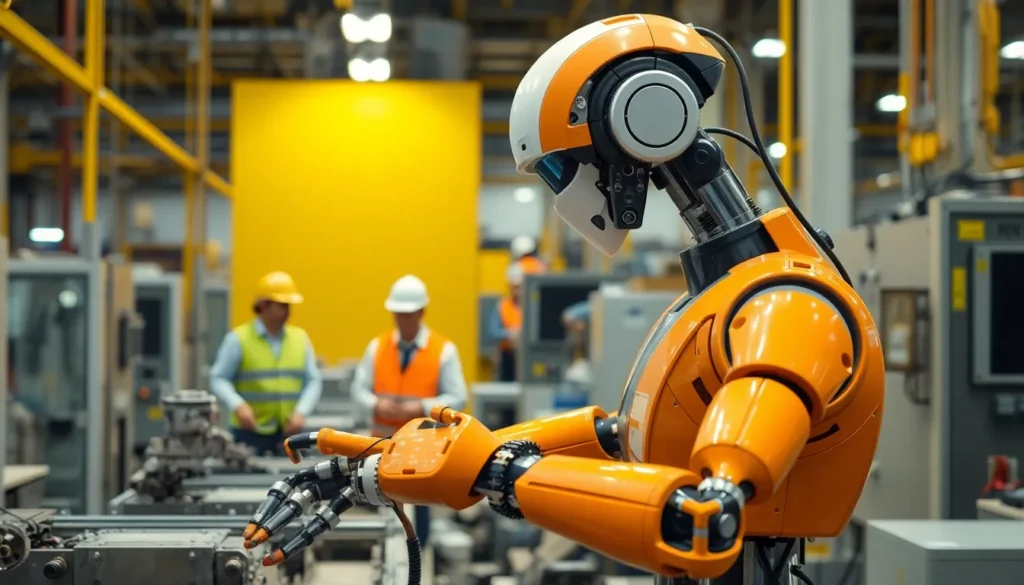In a world where robots are no longer just the stuff of sci-fi movies, robotics schools are stepping into the spotlight. These institutions are the launchpads for the next generation of inventors, engineers, and maybe even a few mad scientists. Imagine a place where students don’t just learn about technology—they get to build it, program it, and watch it come to life. It’s like being in a real-life version of “Transformers,” minus the explosions (hopefully).
Robotics Schools
Robotics schools specialize in equipping students with essential skills in technology and engineering. Students at these institutions learn to build and program robots, gaining practical insights into modern automation. Programs often combine theoretical knowledge with hands-on projects, enhancing the overall learning experience.
Courses usually cover various aspects of robotics, including electronics, programming languages, and artificial intelligence. Many schools emphasize teamwork, encouraging students to collaborate on complex projects. Resources like state-of-the-art labs and industry-standard equipment support the educational process.
Extracurricular activities, such as robotics competitions and workshops, provide additional learning opportunities. These events foster creativity and innovation while allowing students to showcase their skills. Students often receive mentorship from experienced professionals, guiding them on career paths in robotics.
Accreditation plays a vital role in determining the quality of robotics schools. Programs recognized by reputable organizations typically offer a higher standard of education. Students should research accreditation status when selecting a school to ensure they receive a recognized qualification.
As technology continues to evolve, the demand for skilled robotics professionals grows. Robotics schools are crucial in preparing students to meet this demand. Graduates often find job opportunities in various sectors, including manufacturing, healthcare, and research.
Benefits of Robotics Education

Robotics education offers numerous advantages that empower students in their academic and professional lives. Students gain hands-on experience and develop key competencies in technology and engineering.
Skill Development
Robotics education enhances critical thinking skills by requiring students to solve complex problems during projects. Students learn programming languages, fostering their ability to create efficient algorithms. Teamwork becomes essential as they collaborate on group projects, promoting communication and leadership skills. Technical skills are also cultivated through working with tools in state-of-the-art labs. Creativity sees a boost as students design innovative solutions for various challenges, preparing them for future endeavors.
Career Opportunities
In today’s job market, robotics education opens doors to numerous career paths. Graduates often find roles in fields such as manufacturing, healthcare, and research, where their skills are in high demand. Companies actively seek individuals with robotics expertise, given the rapid technological advancements. Many students pursue further education, gaining specialized knowledge that enhances their qualifications. The ability to work on diverse projects can lead to exciting opportunities in emerging industries.
Types of Robotics Programs
Robotics programs come in various formats, allowing flexibility to meet diverse needs. Two prominent categories exist: online and in-person courses, along with options for high school and college programs.
Online vs. In-Person Courses
Online courses offer convenience, allowing students to learn from anywhere at their own pace. These programs include video lectures, interactive modules, and virtual labs, providing a flexible learning environment. On-site learning delivers hands-on experience through direct interaction with equipment and peers. In-person settings encourage collaborative projects and immediate feedback from instructors. Both modalities cater to different types of learners, promoting accessibility in robotics education.
High School vs. College Programs
High school programs introduce foundational concepts in robotics and typically attract younger students. Students engage in basic coding, electronics, and teamwork projects within a supportive atmosphere. College programs, on the other hand, delve deeper into advanced topics such as artificial intelligence and machine learning. These offerings prepare graduates for specialized careers in robotics and related fields. Both levels aim to equip students with practical skills, enhancing their future employability in technology-driven sectors.
Key Features to Look for in Robotics Schools
Identifying key features in robotics schools enhances the selection process. Focusing on curriculum, faculty, and the overall educational environment ensures students receive a comprehensive experience.
Curriculum and Courses Offered
Strong robotics schools deliver a diverse curriculum that covers essential subjects. Students encounter programming languages, electronics, and artificial intelligence. Practical hands-on projects complement theoretical knowledge, allowing learners to apply concepts directly. Courses designed for various skill levels cater to beginners and advanced learners alike. Exposure to real-world applications through competitions or workshops fosters creativity. A balanced curriculum prepares students for both academic challenges and industry demands.
Faculty Qualifications
Qualified faculty members significantly influence a robotics program’s quality. Instructors with advanced degrees in engineering or computer science bring expertise to the classroom. Practical industry experience enhances the learning environment and offers valuable insights. Mentorship opportunities provided by faculty guide students in their career paths, connecting them with professionals in the field. Faculty’s ongoing research and development keep course content relevant and current. Engaging teaching styles motivate students and cultivate a passion for robotics.
Conclusion
Robotics schools play a pivotal role in shaping the next generation of innovators and problem solvers. By blending practical experiences with theoretical knowledge, they empower students to thrive in an increasingly technology-driven world. The hands-on projects and collaborative learning environments foster creativity and critical thinking, essential skills for future careers.
As industries continue to evolve, the demand for skilled robotics professionals will only increase. Graduates from these programs will find themselves well-prepared for diverse opportunities in various sectors. With the right guidance and resources, students can navigate their paths toward successful careers in robotics, making a significant impact on the future of technology.



